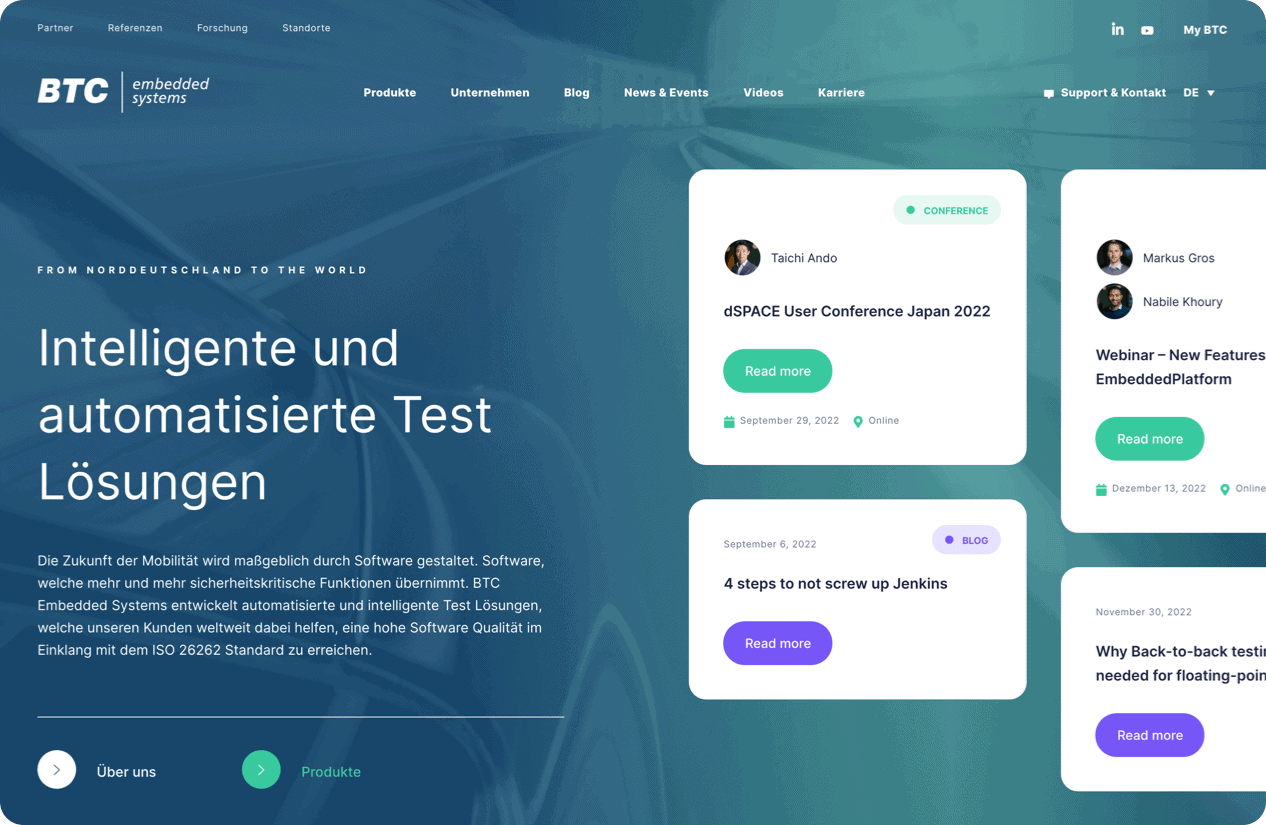What are the crucial goals and steps when planning a website relaunch?
How complex is the process of migrating from another system to WordPress?
Moving a company website from an existing system to WordPress can involve varying levels of effort, depending on the requirements and complexity of the project. Some of the factors to consider are the size of the website, number and type of content to migrate, existing functionality and integrations, as well as the need to adjust or create anew the design and structure.
The migration of content can range from simple texts and images to complex data structures and individual functions. In addition, existing plugins, widgets, or other elements may need to be converted or replaced with WordPress-compatible alternatives. Furthermore, during the relocation process, adjustments to internal linking and infrastructure may be necessary to maintain SEO rankings.
Thankfully, for migration of many elements, such as URLs, media, content, SEO metas, and more, there are various strategies and tools available. These significantly simplify the process by taking care of specific tasks.
For well-known systems like Shopify, there are ready-made solutions that can automate the migration. These tools make the transition easier by exporting data directly from the source site and converting it to WordPress format. This not only saves valuable time, but also minimizes the risk of data loss during the migration.
There are, however, cases where such direct data export is not sufficient or even impossible. This can occur, for example, with highly customized websites or systems for which there are no ready-made tools available. In such situations, the so-called "Scraping" might be a viable alternative. With scraping, data is directly extracted from the website and transferred to the new system.
It is important to ensure that the data is transmitted completely and correctly, since forgetting SEO-relevant data, for example, can lead to a noticeable loss of visibility in search engines.
In conclusion, transitioning from another system to WordPress can indeed be complicated. However, with the appropriate tools, meticulous planning, and a well-considered strategy, it is manageable. Depending on the requirements, there are effective solutions – it's simply a matter of choosing the right course of action.
What SEO aspects should be taken into account during a relaunch?
What is the importance of mobile optimization during a relaunch?
Mobile optimization plays a pivotal role in the relaunch of a company website, as an increasing number of users access the internet via mobile devices such as smartphones and tablets. Mobile optimization ensures that the website loads swiftly and is user-friendly on these devices, boosting the chances of visitors staying on the page and considering the offered services or products.
Furthermore, mobile optimization impacts search engine rankings, as Google and other search providers prefer mobile-optimized pages. Therefore, it is crucial to take into account the requirements and best practices of mobile optimization. This ensures both a positive user experience and strong visibility in search results.
While mobile optimization can be viewed as a separate step or aspect within a relaunch project, it should ideally be incorporated into all relevant phases of the project to achieve the best results.
Which best practices for measuring success are important for a successful relaunch?
First, it's crucial to establish clear objectives and Key Performance Indicators (KPIs) tailored to a company's distinct needs and expectations. This encompasses metrics such as the number of page views, duration of visit, bounce rate, and quantity of conversions.
Another component is the implementation of a web analysis tool such as Matomo or Google Analytics. This allows the performance of the website to be tracked and evaluated in detail. The relaunch should also be used to check and, if necessary, expand the existing event tracking options.
Comparative analyses before and after the relaunch help to reveal true success. The performance of specific pages or areas of the website can be compared. This way, we can identify areas with potential for optimization and implement further enhancements.
And last but not least, continuous monitoring and optimization is crucial to ensure the long-term success of the relaunch. Regular evaluations help to identify trends at an early stage and make timely adjustments.
What impact does the Relaunch have on Online Marketing and Content Strategy?
As part of a website redesign, it can be important to update existing content and, where necessary, create new content to serve specific audiences and provide relevant information. This can also include expanding the range of topics, bringing in fresh perspectives or adjusting the tonality of the content.
A relaunch also offers the opportunity to optimize online marketing activities and promote synergies between different channels. For example, the integration of social media, email marketing and content marketing can be intensified to create a coherent brand experience and increase the reach of the company.
The relaunch also allows the company's SEO performance to be improved in a targeted manner, for example by revising the keyword strategy, optimizing meta tags and adjusting technical aspects such as pagination and URL structure.
After the relaunch, a thorough evaluation of the actions taken must be carried out in every case. In this process, metrics such as visitor numbers, bounce rate, dwell time, conversion rate, or search engine ranking may be used. This is done to measure the success of adjustments in online marketing and content strategy, and if needed, to fine-tune them.
What is a typical timeline for a website relaunch?
What are the important GDPR compliance measures to consider during a website relaunch?
Redesigning a corporate website requires extensive planning to get the best possible results and meet the increasing demands of both users and search engines. Improving usability, responsive design, and targeted SEO strategy is imperative to boost your presence in the digital space. Aspects such as mobile optimization and the harmonization of data protection and security standards should also be included in these considerations.
A successful website relaunch can significantly improve your brand perception and customer experience while strengthening your online marketing and content strategy. It is also important to maintain transparent lines of communication with stakeholders and customers throughout the process in order to jointly overcome emerging challenges.
In order to measure the success of your website relaunch, you should also keep an eye on best practices and corresponding metrics in order to evaluate and continuously optimize the goals you have achieved.
If you have further questions about website relaunch or are looking for help for your individual case, you are welcome to contact us at any time using the contact form below. We are on hand with help and advice.



